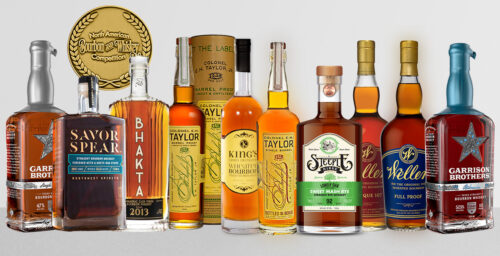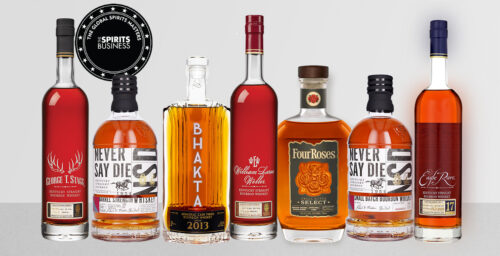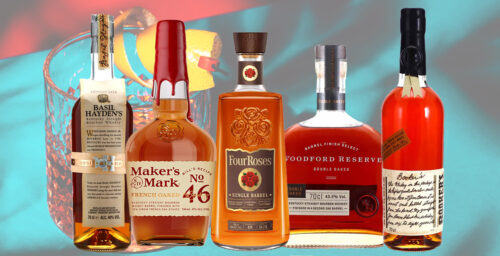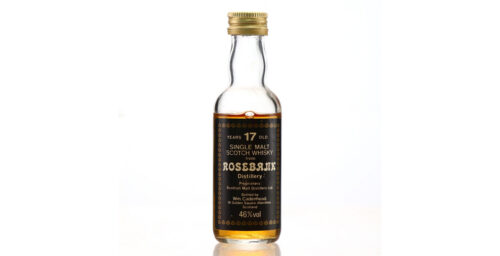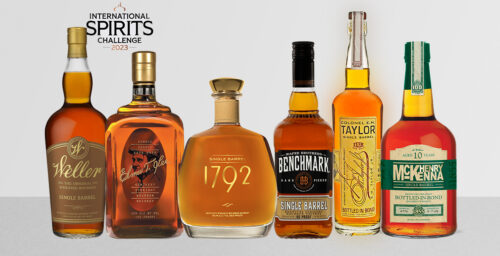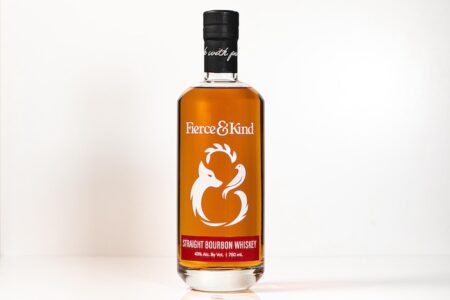Boot Hill Distillery’s history is nothing if not entrepreneurial. In 1872, George M. Hoover loaded his wagon full of whiskey and drove it exactly five miles west of Fort Dodge, Kansas, where selling it was legal. He put up two sod pillars and a plank of wood, and boom! A bar was born. And with it, soon western Kansas’ largest trading post.
Almost 150 years later, western Kansas farmers Roger and Hayes Kelman and Chris Holovach decided to invest in western Kansas’ first-ever craft distillery. Where’d they build it? On top of the original Boot Hill Cemetery.
But hang onto your burial ground metaphors, folks: That space has seen a lot of use since then. The bodies were moved to the municipal cemetery in 1878, and a schoolhouse was put up shortly thereafter. That lasted until 1927, when it got turned into the county’s Municipal Building.
And now, Boot Hill Distillery.
Boot Hill produces every single drop that goes into their bottles: In addition to the Red Eye Whiskey, they also make a gin, vodka, and white whiskey. (They’re working on a bourbon, but shh! It’s resting.) Each of their spirits is distilled in 500-gallon batches, they use a custom-crafted pot still, and allude to a “proprietary aging process” for their Redeye Whiskey, which is not really explained. Every product Boot Hill makes is milled, mashed, fermented, distilled, and bottled onsite.
Boot Hill Redeye Whiskey has won several awards, including “Best Whiskey in Kansas” and a bronze at both the Heartland Spirits Festival, as well as a bronze at the Washington Cup Spirits Competition.
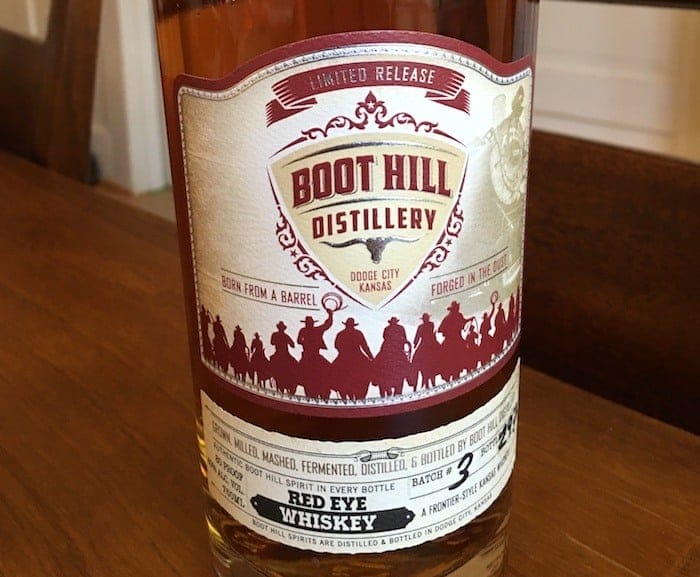
Tasting Notes: Boot Hill Redeye Whiskey
Vital stats: 80 proof; batch #3, bottle 29; mashbill of 51 percent corn and 49 percent wheat; about $35.
Color: Somewhat thin in the glass. Light, like weakly steeped tea, roasted hazlenuts, apple juice, yellow-tinged autumn leaves.
Nose: Along with the appearance, the nose is also a little thin. I get juice, but an acidic one, like grapefruit or tangerine. But there’s also something that smells a little…off to me. Almost like old French fry oil, or cheese. It’s the kind of smell that you’d hand whatever foodstuff it was to a friend and say, “Does this smell okay to you, or…no?” It’s not enough to make me recoil, but it does lend some…complexity.
Palate: That fruitiness in the nose comes back on the palate, but as a different fruit. More like banana, or even more so, the taste of an orange slice at the bottom of an old-fashioned. It tastes clean but a little washed out, like a drink on the rocks that’s been sitting for a while.

